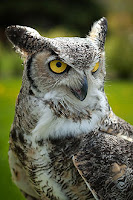"A rose (prickle) by any other name is still a pain."

-Editor, 2013
The identification of the big thorns on a large tree should be straight forward. Take my honey locust....please."
Apologies to Henny Youngman* What we have always called a honey locust thorn is actually a spine. To get to the point
sorry, naming these sharp objects becomes a thorny problem.
Now back to business. Armature refers to all the sharp sticky things on plants that can penetrate your skin. As described at
Missouri.edu, these sharp appendages can be divided into thorns, spines and prickles. It all depends upon what they grew from.
 |
| Honey Locust Leaf Structures? |
Technically
thorns are modifications of stems or branches, such as those found on a
hawthorn. Spines develop from leaf tissue including stipules and even
extensions of the leaf veins, as seen in the American holly on the left. The armature on a honey locust is a spine,
even though to all appearances it is growing from the trunk like a twig
with a bad attitude.
Some botanists do not
differentiate between
thorns and spines as both have vascular tissue. From the point of view
of an amateur naturalist strolling the woods, the differentiation of
these technically is a pain in what ever part of your body brushes up
against or sits on them them. I will chose to lump thorns and spines together rather
than split them apart.
 |
| Multiflora Rose |
Prickles
are extensions of the plant surface (cortex and epidermis), somewhat analogous to our
hair and nails, but again with a mean streak. Examples include thistle, blackberry and rose "thorns". The term prickle seem mild when used to describe the vicious weapons of a multiflora rose specimen whose
recurved points dig further into your skin as you pull away from it. You would
think it would be happy to see you go but it seems to be saying "Stop
where you are!"
So what good are armatures? They obviously have some value or the plants wouldn't have used the energy to produce them over thousands of years. It is postulated that they protect the plant from the browsing and chewing habits of animals. Useless structures have a way of disappearing in evolution. When we see a structure that persists without apparent value, it may be that we just haven't figured out its value yet.
The appendix, found only in humans, is a good case in point. After decades of removing this structure during other abdominal operations believing that "while we are here we should to prevent appendicitis", the tide is changing. There is
increasing evidence that the lymphoid tissue in the appendix, so prominent in the first years of our lives, is important in priming our immune system. More
recent reports suggest that it serves as a reservoir of good bacteria to repopulate the colon after diarrheal disease has flushed the normal flora.
The major value I find in armatures is in identifying the relative few trees and shrubs that grow them. Finally a reason to suffer the pain - tree identification!
 |
| Black locust |
- Honey locust
- Black locust
- Hawthorn
- Gum bumelia
- Common buckthorn
- Osage orange
- Callary pear (Bradford pear escapee)
More exotic examples are at ucla.edu.
http://ipm.missouri.edu/meg/2013/1/of-thorns-spines-and-prickles/
* For the younger generation, Henny Youngman was an comedian whose
routine included the famous one-liner was "Take my wife—please."
 Jay Barber shared this video with me, and although it has nothing to do with Missouri, I had to share it with you. The incredible photography shows the aesthetic value of diversity in nature.
Jay Barber shared this video with me, and although it has nothing to do with Missouri, I had to share it with you. The incredible photography shows the aesthetic value of diversity in nature.













+LE.jpg)
++LE.jpg)












.JPG)

